20 Beasts who made us care and dare
Updated: 2017-06-28 07:49
(HK Edition)
|
|||||||
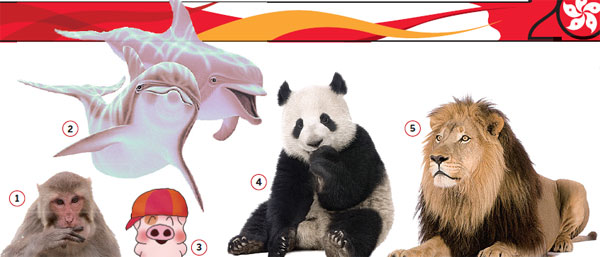
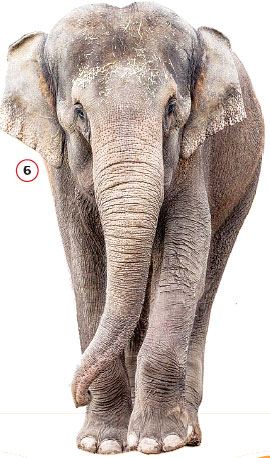

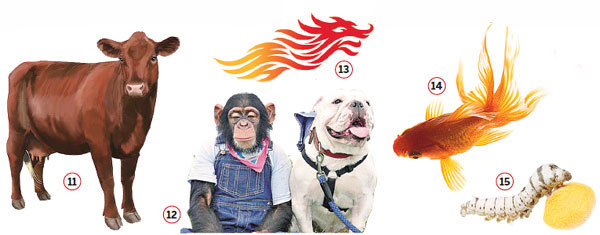
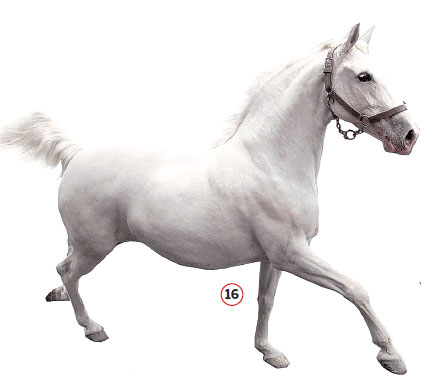
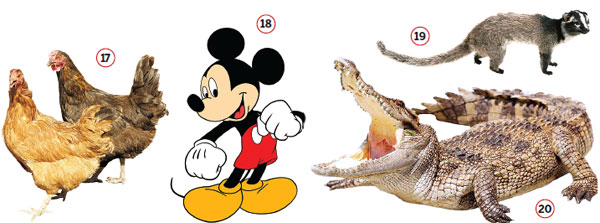
Some we adore, some we serenade, and then there are a few who we think of with caution. Some of them aren't even real but trigger genuine affection. Dara Wang lists animals, marine life and insects that have mattered to the city in the past 20 years.
1. Monkey
Kam Ying was a rhesus macaque monkey - an able assistant to the hawker Chan Yat-biu, also known as "Uncle Bill". Kam Ying would salute passersby and perform somersaults while Chan conducted business. Sometimes she hid inside Chan's vest.
Chan got Kam Ying in 1997. And then in May 2000 she was taken away from Chan for violating the Wild Animals' Protection Ordinance. Some 10,000 people signed a petition demanding that Kam Ying be returned. Finally, the courts ordered the monkey to be restored to her owner, on condition that she was treated humanely.
Kam Shan, or Monkey Hill to most locals, is colonized by some 2,000 macaques. The story can be traced back to water shortages in the 1930s. To meet the demand for water supply, Shing Mun Reservoir was completed in 1937. Reforestation was undertaken to better protect the water catchment. But as soon as the young trees grow, rampant mikania vines spread quickly. Rhesus macaques who love mikania were introduced to help control the weed. We have had the breeding troops ever since.
2. Chinese white dolphin
They were the mascot of events to mark China's resuming the exercise of sovereignty over Hong Kong in 1997, signifying new hope for the city. Now the future of the Chinese white dolphin, also known as the pink dolphin, looks uncertain.
Only 5 percent of their habitats in Hong Kong are currently under the protection of marine parks. The dolphin population in Hong Kong waters has dropped from 158 in 2003 to 41 in 2016. There are around 2,500 of them in the Pearl River Estuary.
The first recorded instance of sighting dolphins in Hong Kong waters could be traced back to the 1637 journal kept by an English adventurer, The Travels of Peter Mundy in Europe and Asia.
Environmental groups have urged the government to designate more marine parks to protect core habitats for this major tourist draw.
3. McDull
McDull is a silly fellow, full of dreams that are never realized. He isn't very bright but has a heart of gold. McDull the pig, the creation of Hong Kong cartoonists Alice Mak Ka-bik and Brian Tse Lap-man, appeared first in June 1995 and since then has been a regular in comic strips, TV shows and films. While he's failed to get into a top university or find a respectable job, McDull is the first cartoon character to have earned a place in Hong Kong's Avenue of the Stars.
His stories double as an encyclopedia of Hong Kong culture, serving up info on local cuisine, like fishball noodles and barbecued pork. By following his adventures, readers get to know about the city's traditional rituals and sports, like the festive bun-scramble race on the island of Cheung Chau in Hong Kong.
4. Jia Jia, the giant panda
Jia Jia was a beloved Hong Kong icon who lived to be 38 - equal to 114 human years. Jia Jia arrived in Hong Kong in March 1999, with An An - gifts from the Central People's Government, marking the second anniversary of the Hong Kong SAR. During their first 6 weeks in Hong Kong, the pandas drew over 270,000 visitors.
Eight years later the giant panda couple, Ying Ying and Le Le, came to Ocean Park - gifts marking the SAR's 10th anniversary.
Jia Jia had six offspring, 13 grandchildren and two great-grandchildren. Incoming Chief Executive Carrie Lam Cheng Yuet-ngor met Jia Jia's great-granddaughter Bing Bing during a visit to the Shenshuping Protection Base in Sichuan last year.
Jia Jia was put to sleep in October last year and is still sorely missed by the city's panda lovers.
5. Lion Rock Spirit
The Spirit of Lion Rock came to symbolize the hardy, driven spirit of Hong Kong people, suffering privation at the end of World War II.
Lion Rock is clearly visible from Kowloon, easily recognized for its shape, like a crouching lion.
Many refugees lived in squatter camps in Kowloon after the war. Hong Kong was emerging from the depths of poverty.
The struggle helped the people of the community to drag their lives out of the mire left by years of war and to rebuild their lives. Lion Rock came to symbolize their resilience.
People believe the spirit enabled the city to achieve great socio-economic advancement that transformed Hong Kong into today's cosmopolitan city, a principal Asian financial center. The Spirit of Lion Rock is still very much a part of Hong Kong life and culture, to this day.
6. Tino, the Asian elephant
The Asian elephant Tino endeared himself to Hong Kong's animal lovers by pushing his long trunk out through his enclosure, begging for food, achieving instant fame and the status of "community pet".
Tino was only a baby when he arrived in Hong Kong in 1958, with a circus from Myanmar. His size made him a star attraction at Lai Chi Kok Amusement Park, the biggest such in Hong Kong until it closed down on March 31, 1997.
Tino lived to be 35, before being struck down by acute pneumonia, in February 1989.
However, the spirit of Tino lives on. In 2015 he returned in the form of a mechanized robot at a carnival at the Hong Kong Central Harbourfront, much to the delight of his many admirers.
7. Brother Cream
It's unlikely anyone knows what really happened to Brother Cream, the British Shorthair cat who grew up in a convenience store in Tsim Sha Tsui East. When he suddenly vanished one day in July 2012, the story made headlines. People fretted over the possible odds a cat used to being cared for was faced with.
Brother Cream resurfaced a month later, wandering in an alley, 1.4 kilograms lighter than before. Nowadays he lives with his family of two humans and five cats in the New Territories.
Although he's withdrawn from public life, Brother Cream remains a celebrity. His Facebook page has over 200,000 likes. Brother Cream has two "biographies" to his name, has appeared in two television adverts and has inspired a wide array of merchandize.
8. Hoi Wai, the orca
They called her Suzie Wong, although she looked nothing like the svelte heroine of the 1957 novel. A 5.15-meter killer whale, Hoi Wai became a star attraction at Hong Kong's Ocean Park soon after her arrival in January 1979. Her main act was to be able to leap out the waters and head a ball, a feat she performed 20 times a week during her 18-year-long career, entertaining more than 56 million people.
The female orca, captured off Iceland on Oct 12, 1977, even shared screen space with the popular Hong Kong actor Andy Lau in the 1992 movie Moon Warriors.
Hoi Wai died in 1997, performing well into her last days.
9. Mosquito
When several blood worms, transformed from eggs spawned by midges, were spotted in a public swimming pool in Kowloon Park in August 2004, the discovery sent a chill through the city. A special commission was set up to work to prevent the city's pools from turning into a breeding ground for mosquitoes.
However, the city is not completely free of other mosquito-borne diseases, such as Japanese encephalitis, which has infected fewer than 10 people a year over the past decade in Hong Kong.
The Culex tritaeniorhynchus variety of mosquitoes is more commonly found in Hong Kong.
As of June 23, there were 44 dengue fever cases in Hong Kong, but the virus arrived from elsewhere.
Hong Kong had its first case of Zika, also transmitted through mosquito bite, in August 2016, when a 38-year-old expatriate woman arrived from the Caribbean.
10. Guide dogs
Guide dogs are much in demand in Hong Kong. Winta and Opal were the first two guide dogs introduced to Hong Kong in 1975. The city did not see another guide dog for another 20 years following the short-lived careers of Winta and Opal.
Google, a labrador from Taiwan, arrived in Hong Kong in 2011. Now it works with a 67-year-old visually impaired man, David Wong Man-chiu, in Chai Wan.
There are 170,000 visually impaired people in the city. About 1,700 of them have requested service dogs. So far only about 40 guide dogs are working in the city.
Meeting the demand will be tough. It takes about two years to train a puppy to be a guide dog. The cost of procuring them is rather high at roughly HK$200,000.
11. Cattle
Some 1,000 bovines, offspring of former farm animals, roam wild in the New Territories such as Lantau Island. The wild cattle live peacefully, feeding on the wild grass of the hinterlands, occasionally coming out for a stroll down an urban lane.
Back in the 1970s, many farmers had set free the cattle they did not want to slaughter. Following the economic boom, Hong Kong's urban areas expanded, pushing the cattle off the land where they would graze. For years some of these animals came back to re-visit their old homesteads.
A special task force designated by the government wrangled 234 head of cattle, 145 of which were sterilized and 206 consigned to the hinterlands.
The future of the city's cattle remains clouded. As the human population encroaches on cattle territory, the space for the bovine exiles is shrinking.
12. Chimpanzee Pan and Bulldog James
Pan-kun, the crazy, smart, extroverted chimpanzee and his dopey, lazy sidekick, Bulldog James, have a huge following among kids born post-2000. The duo rose to stardom on Japan's NTV program, Genius! Shimura Zoo, introduced to Hong Kong audiences in 2006.
The sharp contrast between the pair intensifies the chemistry between them. And their bungling at everyday chores makes them almost human. The dubbing in Cantonese, done by two popular Hong Kong comedians, was a bonus. The show won an award in Hong Kong for the best show purchased from overseas in 2006.
Pan-kun "lost it" one day in 2012, when he attacked a student trainee. He was subsequently fired. James died in 2016.
A sequel with Pan-kun's daughter Pudding and James' great-grandson was introduced this year.
13. Dragon with ribbons
A dragon and three ribbons is the symbol of Hong Kong. The dragon brand signifies a meeting of the East and West, and the city's enduring link with an animal figure that is also a cultural icon. The blue and green ribbons stand for the city's blue sky and sustainable environment. The red ribbon's silhouette is designed after the Lion Rock, representing the "can-do" spirit of the Hong Kong people.
The branding of Hong Kong coincided with the city's return to the country in 1997, in order to give it a unique identity as "one of the most cosmopolitan and vibrant cities in Asia".
The government expects the logo to promote five core values, "Free, Enterprising, Excellence, Innovation and Quality Living". These values are considered crucial to maintain the competitiveness of Hong Kong as a global city in Asia.
14. Goldfish
A 300-meter-long section of Tung Choi Street North in Mong Kok is called Goldfish Market. The 40-odd shops there keep tropical fish, gold fish and fancy carp in plastic bags that look like crystal baubles.
The original idea of keeping fish in oxygen-filled plastic bags to symbolize good fortune and prosperity has evolved into a brand identity for the local fish market, drawing dedicated aquarists, casual fish keepers and curious spectators.
In the 1950s hawkers sold goldfish and blood worms near the Yau Ma Tei train station. After the mid-1970s, they moved into brick and mortar stores. Tung Choi Street became the center of their trade. Some of these shops still down the shutters at 9 pm, following a century-old tradition.
15. Silkworms in space
Ever wondered what life for silkworms shot into space might be like? Well, as smooth as silk, apparently, for the six silkworms who went on board the Tiangong-2 space lab last year.
Five of the silkworm larvae started building cocoons four days earlier than would be expected on terra firma. After 31 days the silkworm adventurers were brought back to earth. Their silk was shown to be denser, having greater tensile strength and more rigid than those produced on earth.
The brainchild of four Hong Kong secondary students, the project went ahead with the blessings of space scientists. Experts found the results of the experiment promising, and are researching "spaced out silk" for use in medical practice and as material for future space suits. Other experts believe the experiment may help advance the study of the influence of microgravity.
16. Racehorse
Hong Kong people are no strangers to the idea of going to the races. This "sport of the kings" was introduced to the city in 1842. While preparations were underway for Hong Kong's return to the country, State leader Deng Xiaoping had assured the city's residents that their local culture would remain unchanged after 1997. "The dancing and horse racing will continue," he said.
With generations of experience behind them, Hong Kong's groundskeepers have groomed the city's racecourses to stand among the world's best. Several high-quality international racing events have been held on the city's turf - not to mention the equestrian competitions held here, as part of the 2008 Beijing Olympics.
17. Chickens
While Hong Kong people are partial to chicken in their meals, chickens also have a dark side to their history in Hong Kong. The outbreak of avian flu in 1997 sparked a worldwide alarm, prompting a mass slaughter of chickens in Hong Kong.
Over the past 19 years, millions of chickens have been put down whenever the poor creatures were suspected to be carrying the potentially lethal flu virus.
In May 1997, a 3-year-old boy died of avian influenza in Hong Kong. Three months later, he was confirmed as the first human to be infected by the H5N1 bird flu.
People are frequently warned to keep their distance from live chickens. Between February 2013 and June 2017, there were 1,552 confirmed cases of human infection and 596 deaths from H7N9, another virulent form, around the globe, according to the United Nations.
18. Mickey
Mickey and Minnie Mouse have been a hit with the city's young people and the young at heart since Sept 12, 2005, when Hong Kong Disneyland opened, bringing the iconic comic strip characters created by Walt Disney to life on Hong Kong soil. Visitors eagerly await the acts Mickey and Minnie (actors playing the cartoon characters) perform at the entertainment theme park on a daily basis, and a post-performance selfie with the celebrity duo is de rigueur. Hong Kong seems to have adopted these cartoon figures imported from Hollywood as its own.
Located in Penny's Bay, Lantau Island, Hong Kong Disneyland is a 126-hectare park that has received over 64 million visitors from around the world. It is one of the city's largest amusement parks.
19. Civet Cat
Hong Kong people ate the meat of the civet cat until it was reported to be the carrier of the virus that led to an epidemic in 2003. The outbreak of Severe Acute Respiratory Syndrome (SARS) placed Hong Kong on the frontline of a global health crisis. About 1,800 people came down with SARS in the city; 299 died.
Microbiologists tracked the virus to civet cats. Years later an international research team found that SARS had its origin in Chinese horseshoe bats and the virus was transmitted to humans through civet cats.
The civet cat is a wild species found in Central and East Asia. It was the second-most popular wild animal that Hong Kong residents liked to eat, after the snake, according to a 1996 survey conducted by the animal rights group Traffic East Asia.
20. Pui Pui, the crocodile
The name sounds harmless and cute, nothing like the threat Pui Pui, a female crocodile, posed to Hong Kong residents when she was spotted next to a murky creek in Yuen Long on Nov 2, 2003. Two crocodile hunting experts, Australian John Lever and He Zhanzhao from Guangdong, were on her trail for months, without success.
The cat-and-mouse game made headlines worldwide, until Pui Pui was captured by a 65-year-old fisherman, Ng Lo-tau. Ng said Pui Pui "struggled very hard, with her huge tail thumping on the ground", but was finally subdued under five layers of fishing net.
Pui Pui was 4 years old at the time, 1.75 meters long, and weighed 19.5 kg. Since August 2006 Pui Pui has lived in a 72-square-meter enclosure in Wetland Park, leading a quiet, solitary life.
(HK Edition 06/28/2017 page6)